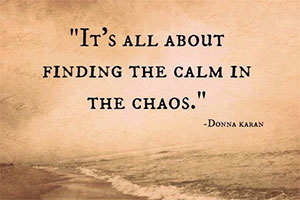 While people-watching at the airport recently, I witnessed a shocking interaction. The gentleman was clearly a business traveler. He was wearing a professional suit with recently polished shoes. He looked anxious and impatient as he paced in front of the gate area that should have been boarding any minute. Aside from the pacing, though, his demeanor seemed calm. He was on the phone with someone and was listening intently to what they had to say. Every few seconds, he’d say “uh huh….ok….hmmm….ok” so it seemed like any normal business phone call full of rushed details before boarding a flight. And then I heard the man say “Ok, well, why don’t we try this…” in the same volume and tone as all of his hmmm’s and uh huh’s. But then the tone changed.
While people-watching at the airport recently, I witnessed a shocking interaction. The gentleman was clearly a business traveler. He was wearing a professional suit with recently polished shoes. He looked anxious and impatient as he paced in front of the gate area that should have been boarding any minute. Aside from the pacing, though, his demeanor seemed calm. He was on the phone with someone and was listening intently to what they had to say. Every few seconds, he’d say “uh huh….ok….hmmm….ok” so it seemed like any normal business phone call full of rushed details before boarding a flight. And then I heard the man say “Ok, well, why don’t we try this…” in the same volume and tone as all of his hmmm’s and uh huh’s. But then the tone changed.
With each additional word he said, the tone was louder and angrier until he finished the sentence screaming with a bright red face and veins bulging in his neck. “Ok, well why don’t we try this…I’ll work on being more understanding WHEN YOU WORK ON BEING LESS OF A MORON!!!!!” Everyone gathered at the gate turned to identify where the sudden fit of rage was coming from. The normally buzzing airport fell to a hush as the man lost his composure and continued his verbal assault, barely taking a breath between sentences.
When he finished, he put the phone in his pocket and continued to pace with sweat pouring down his temple. He was unaware that everyone in the area was fixated on him. He was in his own head, still thinking of additional things to yell about. Then, finally, his shoulders slumped, he sat down and rested his head in his hands. He sat like that for several minutes, looking like someone who had just lost the last game of the season. He almost looked like he was in disbelief. He took his bag and left the gate just before the plane started boarding.
For my entire flight, I couldn’t help but wonder what he was thinking. Was he ashamed? Was that the first time he had snapped and lost control? By the skillful words he used to tear the employee apart, I had a hard time imagining that was possible, but the Jekyll and Hyde nature of his demeanor change made me wonder. In the end, what I wanted to know the most was what he’d say to that employee the next time he sees him. I hoped the first thing he’d say is “I’m so sorry. There was no excuse for that,” but would that even be enough?
Emotional intelligence, core composure, and emotional restraint are crucial leadership skills given the degree of stress and pressure that comes along with the role. The anger and hostile language this manager expressed was the product of prolonged frustration and anxiety. But the emotional outburst had no chance of resolving the root cause of the problem. Instead of using positive leadership behavior and assertively addressing the issue to work towards a solution, he lost control and added a new destructive wedge in that relationship that is likely permanent.
While regaining trust that has been lost due to a damaging outburst is an arduous uphill battle, it’s a journey that leader must take.
- First, he must apologize clearly and thoroughly for what was said, how it was said, and why he said it. A generic apology that lacks ownership is likely to do more damage than not apologizing at all. Never use the phrase “I’m sorry for what happened.” That sentence implies both parties were victims of an outside force.
- Next, he must communicate that while his frustrations are valid, there is no excuse for responding in such a destructive way. He must share his reflections on the event and how he would take a different path if he could. Then, he needs to be transparent that controlling his emotions and communicating effectively are a development area he will address immediately.
- Finally, if there’s any hope for salvaging that relationship, he must be transparent about his errors and openly share what he’s learning about himself along the way. One of the only things that can repair eroded trust is the powerful combination of humility and accountability. I’d like to think that when that manager walked away from the gate, it was to make that exact remorseful call to the employee.
